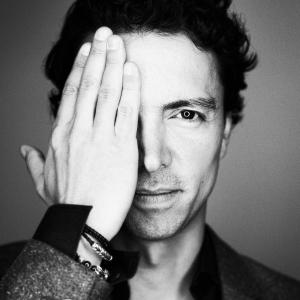BLOG
Emart’s Transformation to a World-Class Retailer
Reconsidering customer experience and types of shopping trips leads to high-impact expansion.
After years of leadership in its home market, and being called the “Korean Walmart,” Emart is pushing hard to become recognized as a world-class retailer in its own right. And it’s using strategy-led design to get there. Strategy-led design is the seamless integration of the brand and business strategy with design. This approach is rooted in a deep understanding of the customer, which is built into every facet of design, whether visuals like logos and signage or the experience itself.
Emart’s direction is in keeping with the leadership tradition that has marked the company as South Korea’s first discount retailer since its launch in 1993. Moves like its fresh market grocery, occupying the entire first floor of its typically three-level hypermarkets and being first to adopt an “everyday low prices” policy helped cement its position. Today, it operates 130 stores in Korea that produce £6bn annually in turnover.
In recent years, Emart has faced soft sales in a very difficult market environment. The consumer base is very homogenous and any significant point of competitive differentiation is immediately copied.
The challenge became clear – to achieve world-class retailer status, Emart would need to undergo a major transformation. It needed to more effectively engage customers through an experience unlike any other in the market. To enable this strategic transformation, Emart realized it would need a complete rethink of its hypermarket brand and experience, and to develop stand-alone retail formats to drive growth. It appointed Prophet to chart the way, using our strategy-led design approach as the basis for the process.
“To achieve world-class retailer status, Emart would need to undergo a major transformation.”
Building up an understanding of Emart customers was particularly challenging because Korean consumers all tend to have similar demographics, attitudes and shopping behaviors. Moreover, 80% were already shopping at Emart. That made typical segmentation studies about “who” was shopping there less germane than “why” they were.
It took a novel and innovative approach to identify segments based on trip types and their corresponding needs, the economics of different shopping occasions and how retail formats and shopping occasions intersect. Over a six-month period, we delved into why Korean customers shopped at both Emart and its competitors across 10 major product categories.
Eight occasions were identified – such as “everyday needs”, “quick mission” and “social outing” – and prioritized against brand and business credibility, along with execution capability. This selection became the filter for understanding the customer needs that had to be built into the brand.
Understanding customer behavior was one thing. Finding ways to link and drive their shopping occasions to an Emart versus a Lotte Mart or Tesco’s Home Plus – all major players in Korea – posed another challenge. Despite the popularity of its fresh groceries, the lack of cohesiveness in the rest of the store was a detriment to delivering the kind of clear brand story and consistent customer experience that can translate into brand loyalty and greater sales.
Emart’s hypermarket stores are typical of Korean retailing. From one section to the next, the style, feel and look are dramatically different. This promotes customer confusion. Shoppers are awash in a variety of point-of-sale communications. It all results in unclear messaging and an inconsistent experience.
Retail executives walk their stores with an eye on merchandising and signage. They don’t typically put themselves in the customer’s shoes to understand what they are feeling – excitement at exploring the store or dread at wasting time trying to fight the crowds to find five specific items.
We were able to put Emart’s leadership (and our own team) into its shoppers’ shoes by utilizing a technique we call Experience Attribute Mapping (EXAM). This allows us to map the customer experience in minute detail, from the customer’s perspective. From there, we apply elements of what the brand strategy should be at various key interaction points. How this greater understanding of Emart’s customers and the shopping experience will play out in a repositioned brand is still a work in progress. But Prophet was able to provide a taste of the possibilities through the development of three new store formats all designed and opened in 100 days.
The challenge was to transform an underperforming Emart store, which had been a Walmart, with formats that previously hadn’t existed in Korea: a warehouse/club-style store (minus membership requirements), a lifestyle-oriented electronics store and a pet store.
The 17,000-square-metre ground floor was given over to Emart Traders – characterized by mass merchandising, value pricing and bulk purchases of everything from fresh food to office supplies. Featuring a clean, simple and well-organized flow, it emphasizes deals, through bright and inviting signage, along with a merchandising presentation of open cases on shipping pallets.
Matrix, the electronics division, departs from the single-manufacturer stores that typify Korean electronics retailing. It emphasizes interactivity, with demonstration areas that hadn’t previously been employed in the market. It also focused on customer needs, with “watch” “listen” and “play” sections, which shoppers gravitate to according to the type of product they want. It also has a more urban feel – reinforced with graffiti on concrete surfaces.
The pet department, Molly’s (named after one of the Emart chairman’s dogs), shares the first floor with Matrix and is a huge draw to people who normally shop for pets through vets or online. The bright and lively environment features color cues to denote different departments – from the Beauty Studio’s (grooming) bright topaz blue to the blue and white of Molly’s Café where owners (known as pet parents) and dogs can enjoy a meal together.
FINAL THOUGHTS
All three concepts have exceeded Emart’s expectations and are being rolled out more broadly. They established the value of identifying customer needs and creating an engaging experience to address them. And as the retailer moves closer to bringing its new positioning to life in its stores, it can understand the role of customer-focused, strategy-led design in its move to the world stage.

